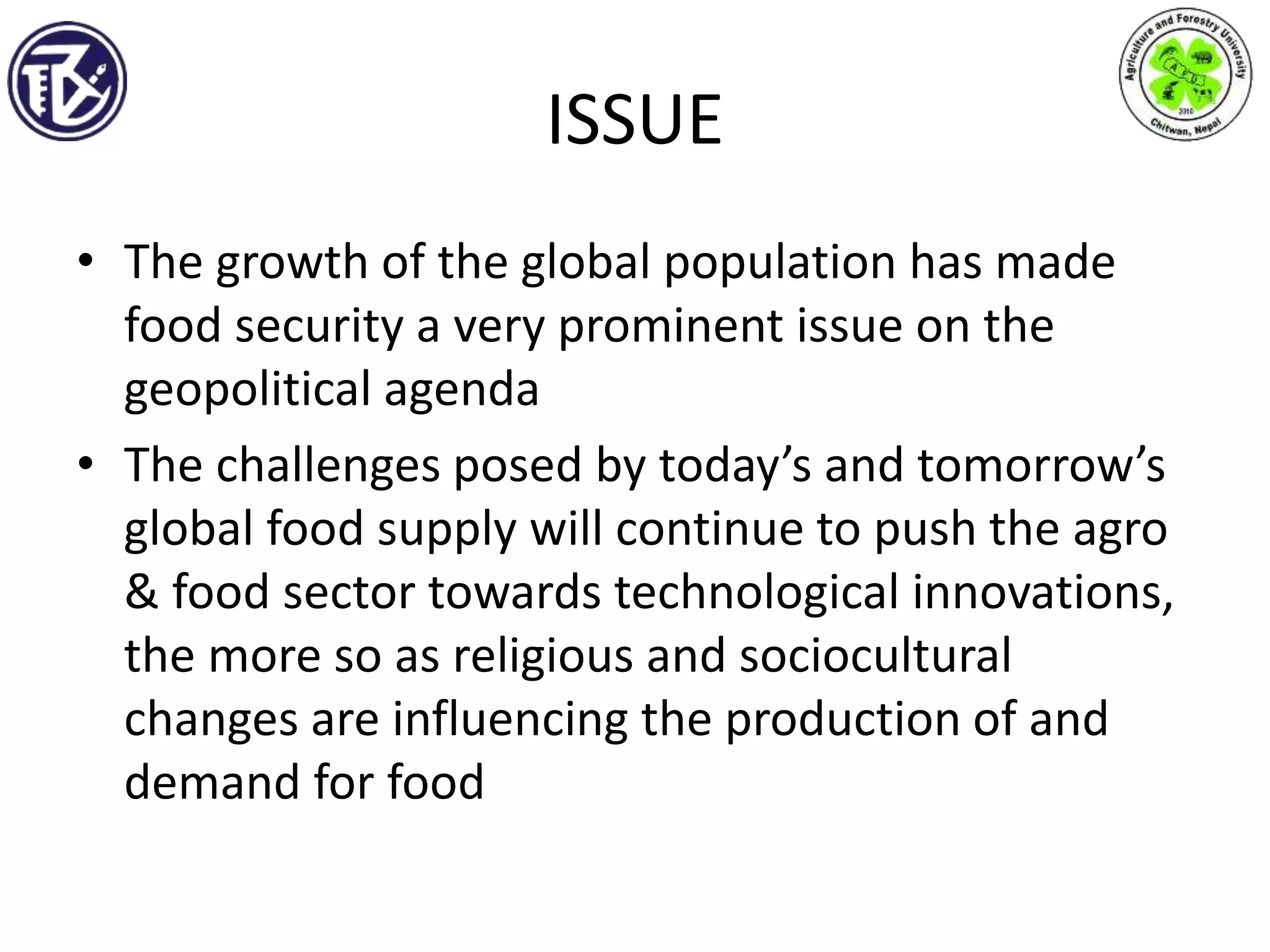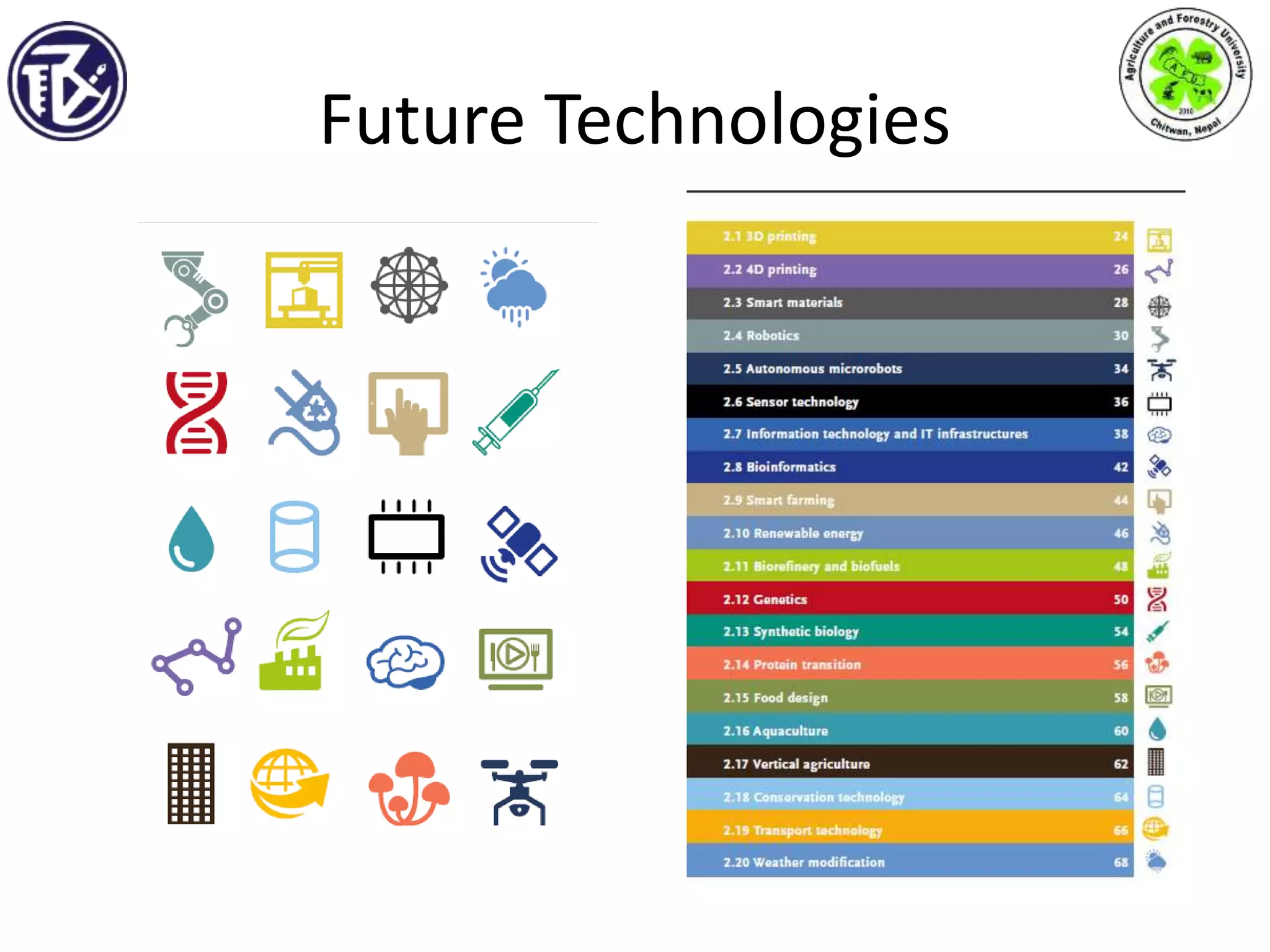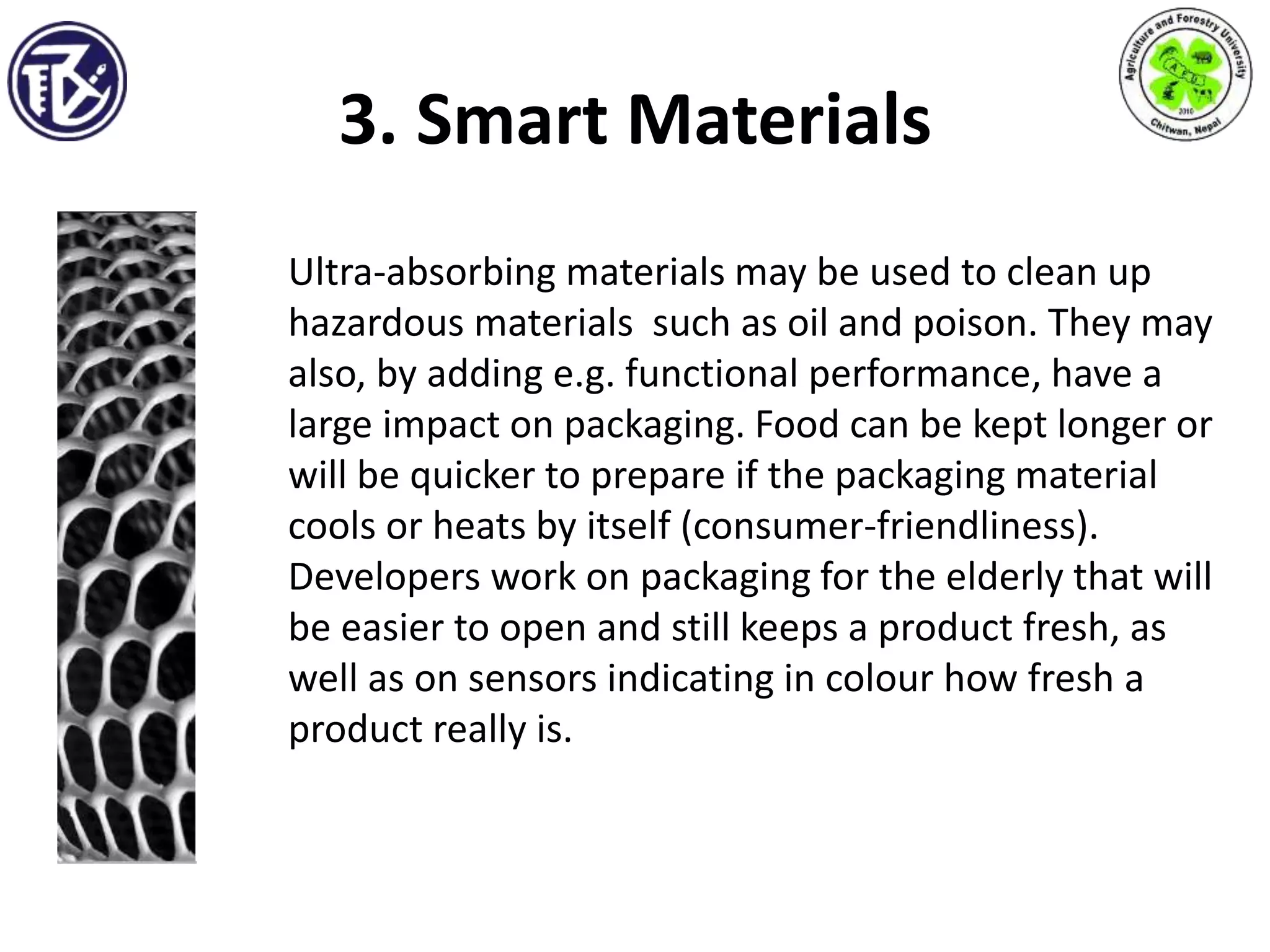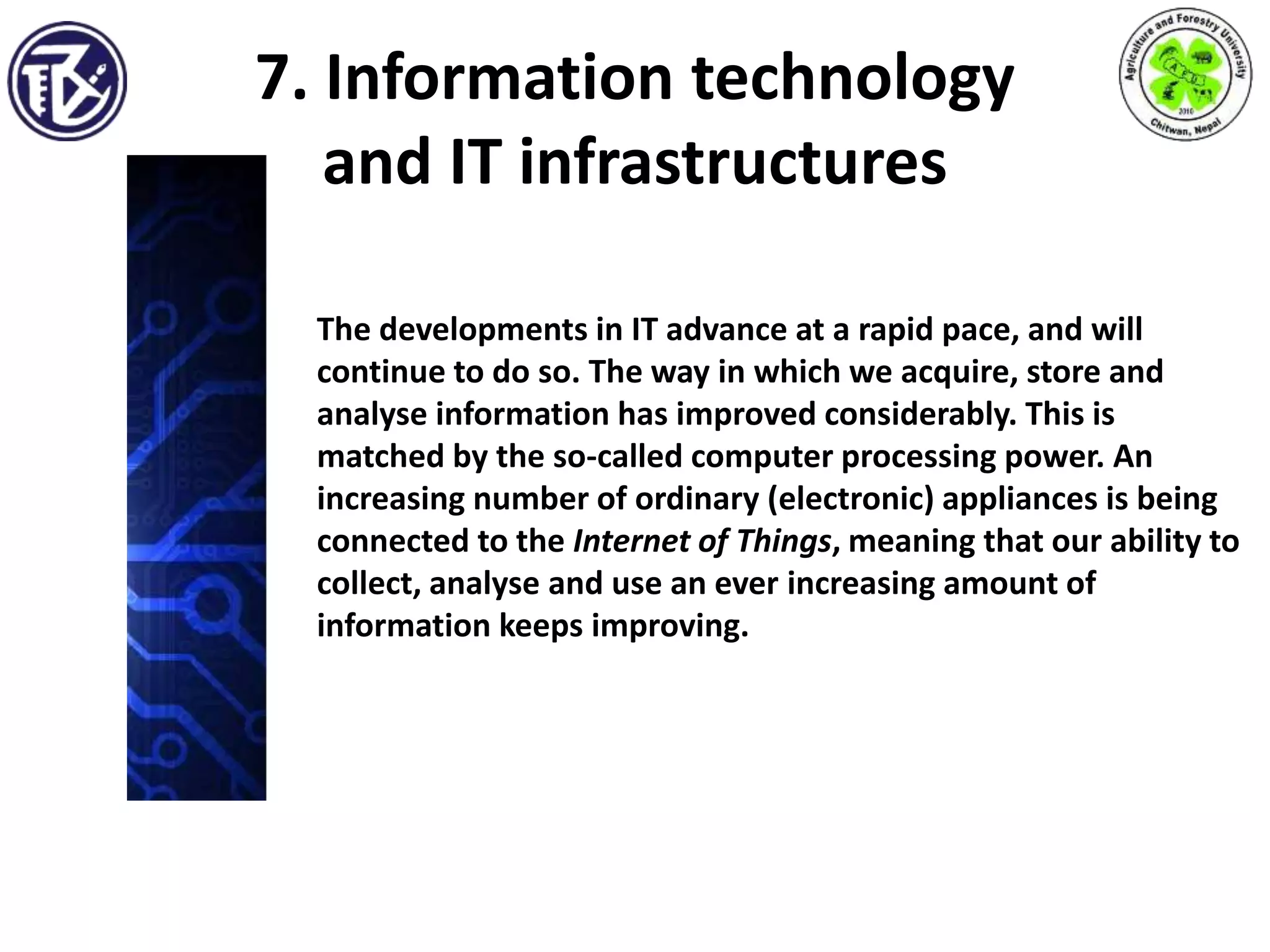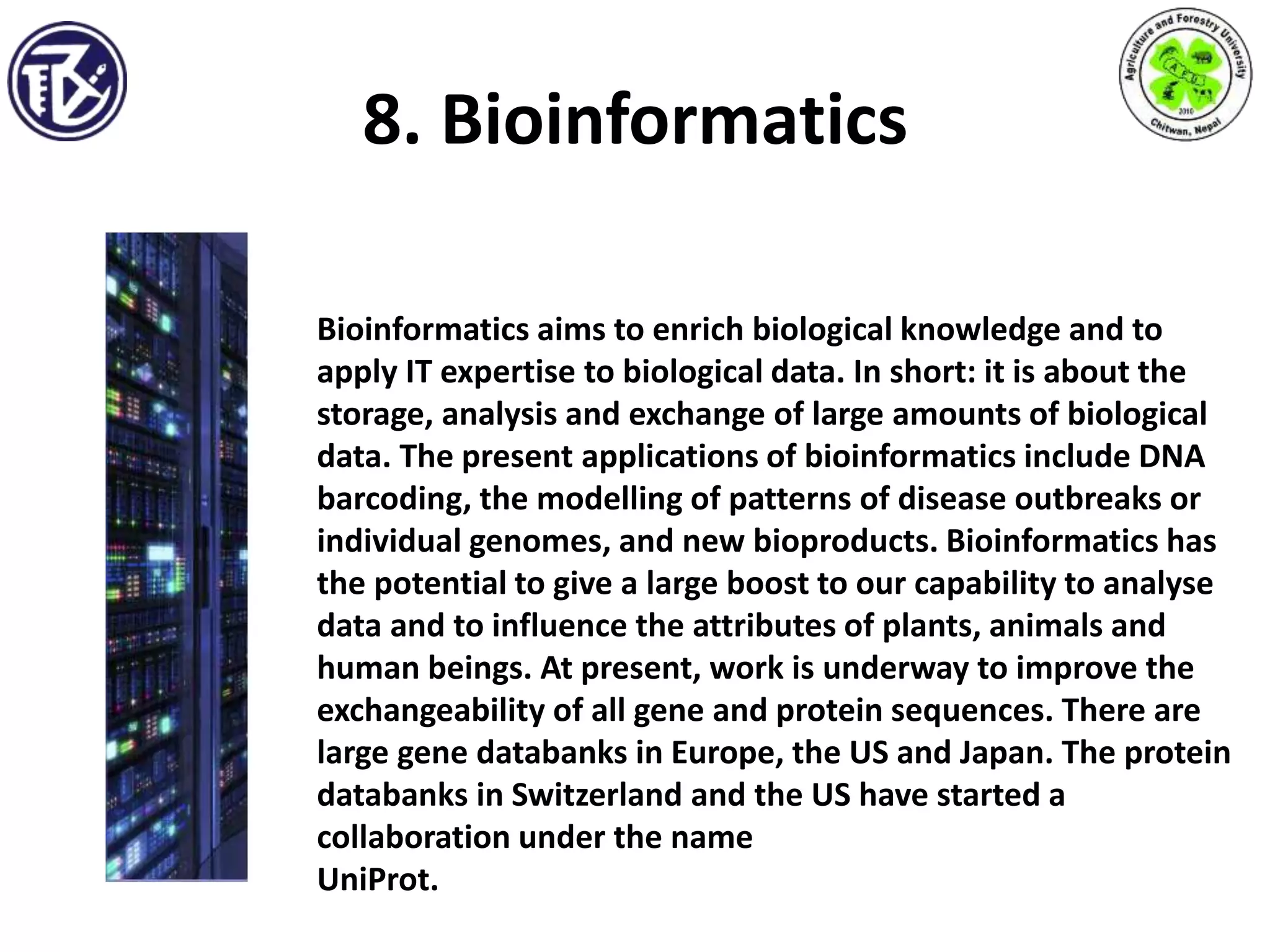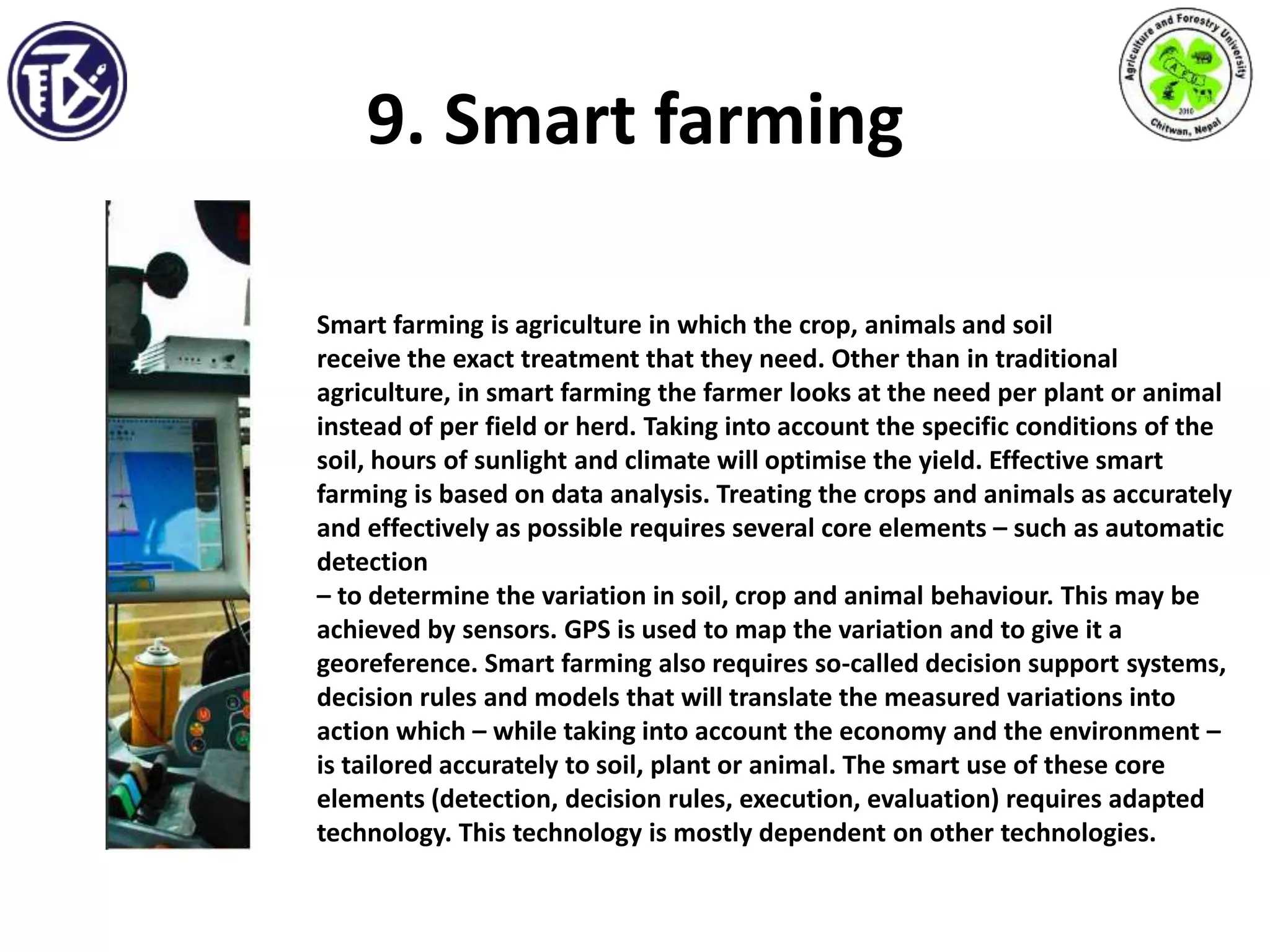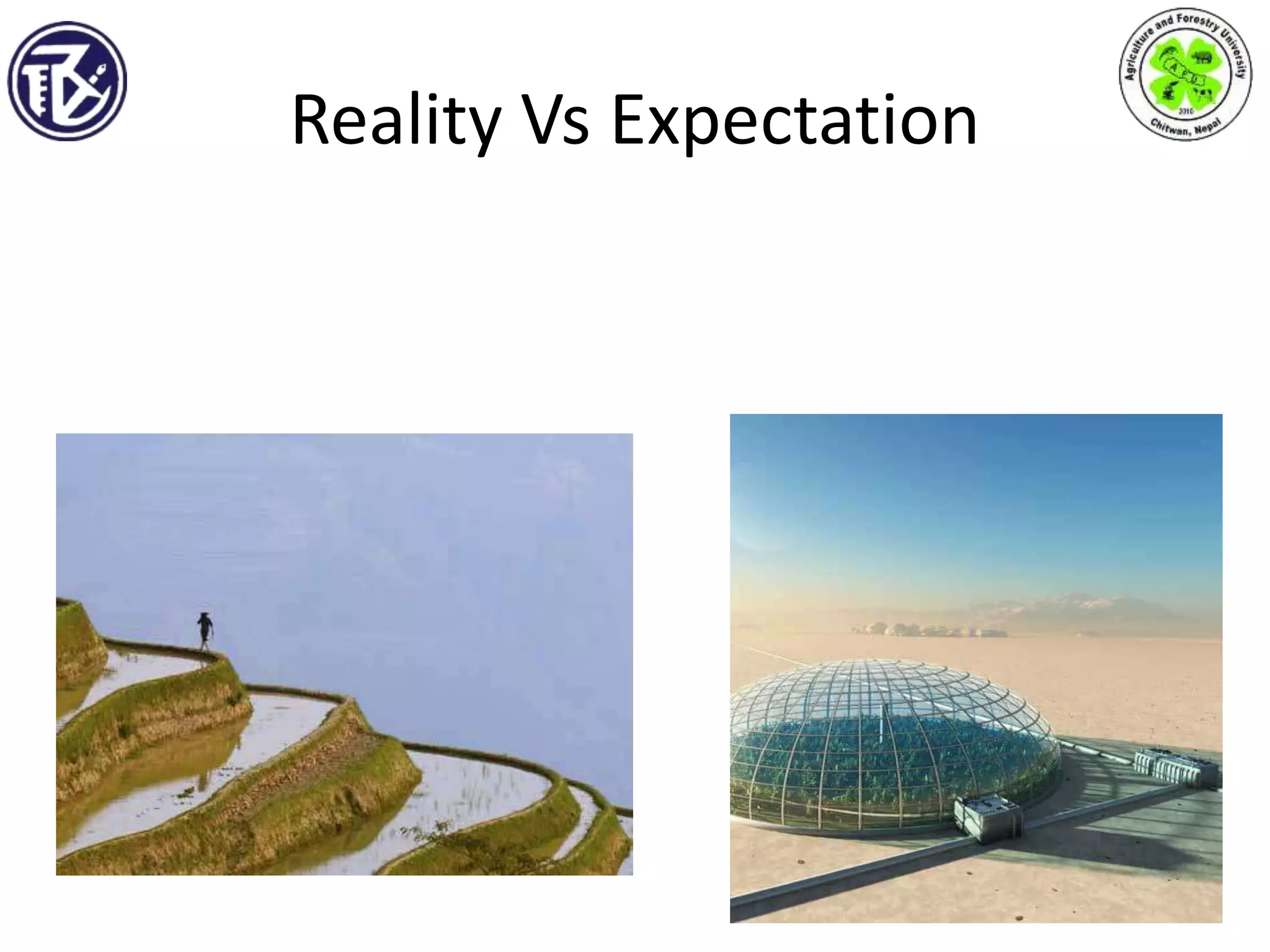The document discusses the implications of global population growth on food security and the expected technological innovations in agriculture by 2050. It highlights various advancements, including 3D and 4D printing, robotics, smart farming, and alternative protein sources, which are crucial for addressing food shortages and environmental challenges. Lastly, it emphasizes the need for a collaborative debate on the future of the agro & food sector to inspire policy and innovation.

